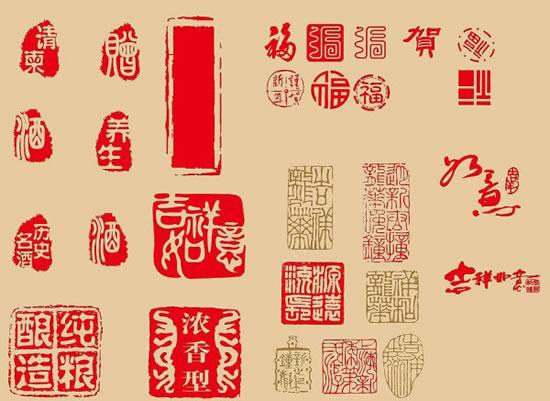Chinese Seals
中国印章
Seal cutting, though based on Chinese calligraphy, is a comparatively independent traditional art form.
印章即玺印篆刻,是依附于书法而又具有相对独立性的一种传统艺术形式。
It takes Chinese characters as its form of expression, using carving knives instead of the writing brushes, and stone instead of paper.
它也是以文字为表现对象,而以刀为笔,以石作纸。
Similar to inscriptions on ancient bronze and stone tablets, it can be viewed as a pocket edition of tablet inscription.
与金石碑版相近,可以看作是袖珍的碑版。
The seal has many names in history.
在印章史上它的名称几经变更。
It was called xiyin (literally meaning the imperial or royal seal) during the Warring States Period, the Qin and Han dynasties, and the Wei and Jin periods.
战国、秦汉、魏晋的印章称为玺印。
The Ming and the Qing dynasties were universally acknowledged to be the two golden periods in the history of seal cutting,and coincidentally the seal was known as seal cutting then.
明清以后的印章称为篆刻,是印章史上公认的两个高峰。

And the long period from the Tang Dynasty to the Yuan Dynasty turned out to be a time when the royal seal was on the wane and seal cutting waiting to be rejuvenated.
唐、宋、元三 代则处于玺印已衰、篆刻未兴的低谷。
The use of the seal also varied.
在用印方法上,前后也不相同。
Clay impression was used before the Sui and Tang dynasties and inkpad or red ink paste has been used since the Tang and the Song dynasties.
隋唐以前封泥,唐宋以来使用印泥。
Xiyin can be classified into official seals and private seals.
玺印一般分为官印和私印两类。
Official seals refer to those of emperors and officials.
官印称官方的用印,包括帝王的宝玺和官员的印章;私家的用印统称为私印。
The making materials used in ancient times mainly include gold, silver, copper, jade, amber, agate, stone, bamboo and wood.And copper seals constituted an overwhelming majority.
古玺印以坚实的物质为材料,大体上有金、银、铜、玉、琥珀、玛瑙、瓦石、竹木等,尤以铜质为多。
Most of the seals were cast, and some were carved.
制作方法多用铸造法,但也有凿刻法。
“Chinese Seal,Dancing Beijing”,the emblem of the Beijing 2008 Olympic Games officially unveiled on August 3, 2003, is acombination of the five rings, a Chinese seal character of Beijing and “Beijing 2008” in English.
2003年8月3日晚,北京奥组委举行隆重的2008年奥运会会徽“中国印•舞动的北京”发布仪式,将中国特色、北京特点和奥林匹克运动元素巧妙结合。












